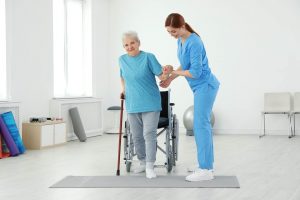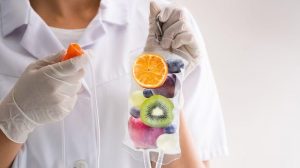Stroke is still one of the biggest threats to Indonesian public health. This disease caused by a blockage of the blood vessels that deliver blood to the brain requires more attention to increase the quality of our health. It is important to understand what a stroke is, including its prevention and treatment, in order to lower the risk of dying caused by a stroke.
What is a Stroke and Types of Stroke?
Our brain needs a sufficient blood supply to function properly. A stroke occurs when the blood supply to the brain is interrupted because some blood vessels or arteries are blocked or burst. Brain cells will die if there is a lack of blood that is rich in oxygen and nutrients. As an outcome of the disturbances in brain function, other organs connected to the brain will be affected.
Stroke is a serious condition that needs an immediate emergency treatment to restore blood flow to the brain, minimize brain damage, and save the life of the person affected by the stroke. When a stroke occurs, the individual who experiences it may not necessarily be able to feel the blood flow disturbances. However the individual may experience emotions or emotions related to symptoms of a stroke. Stroke treatment requires knowledge of the symptoms.
There are three main types of stroke:
- Ischemic Stroke
Occurs when a blood vessel that supplies blood to the brain is blocked, usually caused by a blood clot. As many as 87% of strokes are ischemic. Ischemic strokes are divided into two groups:
- Thrombotic stroke: a blood clot forms in an artery that carries blood to the brain. Usually these arteries are narrowed caused by the build-up of plaque made up of cholesterol, fat, and other substances in the body.
- Embolic stroke: a blood clot forms in another part of the body, ruptures, and travels to the brain. Oftentimes these clots come from the heart.
- Hemorrhagic Stroke
Occurs when a blood vessel bursts or leaks, then bleeds into brain tissue and damages brain cells. Hemorrhagic strokes consist of two types:
- Intracerebral hemorrhage: blood from a ruptured artery enters the brain tissue causing brain cells to die and stopping the brain function.
- Subarachnoid hemorrhage: brain bleed caused by a rupture of an artery located between the skull and brain.
- Transient ischemic attack
Also called a light stroke or mini stroke. Occurs when there is a blockage in an artery that blocks blood flow to the brain. The blockage usually lasts less than five minutes, but this attack can be a warning sign of a more serious ischemic stroke.
Besides those two main types, there is another type called cryptogenic stroke that has unknown cause. There is also a brain stem stroke, which is a stroke that occurs in the brain stem and locks both sides of the patient’s body so that the patient cannot speak or move his body from the neck down.
Various and How to Spot Symptoms of Stroke
Brain damage from a stroke can affect the entire body. Individuals affected by the attacks could experience mild to severe disabilities, including paralysis, impaired thinking, speech problems, and emotional disturbances. If the stroke treatment is delayed and the intensity of the stroke is severe, the person could lose their life. Therefore, it is important to recognize the following five main stroke symptoms:
- Sudden numbness or weakness in the face, arm, or leg (especially on one side of the body)
- Sudden confusion, trouble speaking, and not understand other people conversation
- Sudden difficulty seeing with one or both eyes
- Sudden difficulty walking, dizziness, and loss of balance or coordination
- Sudden severe headache with unknown cause
What to Do If You Have a Stroke?
In stroke treatment there is what is called as the golden period. This period lasts for less than 4.5 hours, starting from the very first symptoms of stroke to the treatment in the hospital. In detail, stroke patients must have arrived at the hospital in less than 2 hours, while the examination and treatment must be done for a maximum of 2.5 hours.
Therefore, immediately call an ambulance or hospital if you see someone around you who is showing symptoms of a stroke. People who have had a stroke will find it difficult to seek help on their own because of the symptoms they experience. The quick initial steps of those around the person will determine the safety of the individual.
First Aid on Site and in Hospital?
Stroke treatment can only be carried out by trained medical personnel. If you suspect someone close to you is having a stroke, try the FAST test:
- Face: see if one side of the face looks weak or droopy
- Arms: ask the person to raise both arms, see if one arm is not raised
- Speech: check whether the words that come out of the person’s mouth are clear and understandable
- Time: directly call an ambulance or hospital
While waiting for the ambulance to arrive, accompany and calm the person down. Keep the person conscious and don’t give any food/drink or medicine. Even if there is a vehicle, you should not bring the patient to the hospital by yourself. It’s better to wait for an ambulance that has the needed medical equipment to care for him/her along the way.
What to Do to Prevent Stroke
A person is at risk of having a stroke if there is a family member who has a history of the disease. But there are more risk factors that can be controlled to prevent stroke, for example:
- Monitor blood pressure. High blood pressure is a major risk factor for heart disease and stroke. Talk to your doctor about how to control high blood pressure.
- Avoid smoking. Cigarette smoke from tobacco contains many toxic substances which if inhaled can cause various diseases, including stroke.
- Control blood sugar. Like blood pressure, high blood sugar levels increase the risk of having a stroke.
- Maintain weight. Apply a healthy lifestyle and diet, including doing regular exercise. Being overweight increases the risk of stroke.
Quick action from the people around the person who is having a stroke is vital for the treatment. Meanwhile stroke prevention strategies depend on each person specifically. Consult to a doctor to find out your overall health condition so that you can avoid the risk of stroke.



